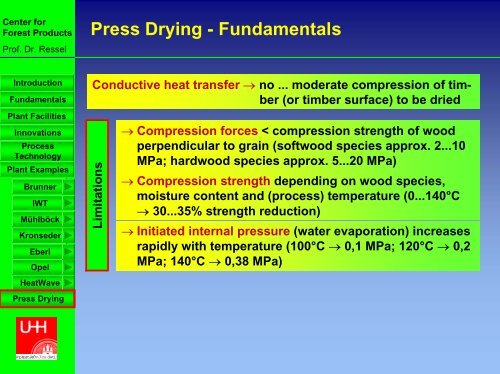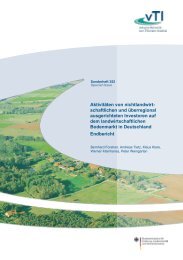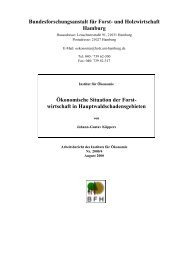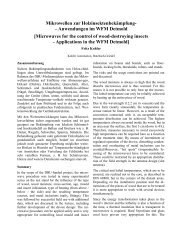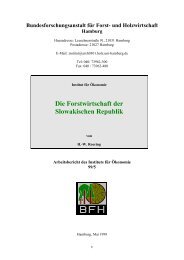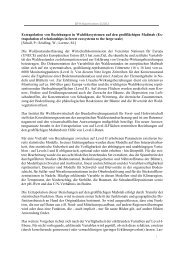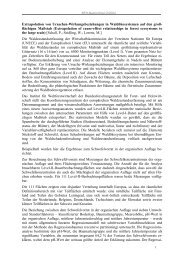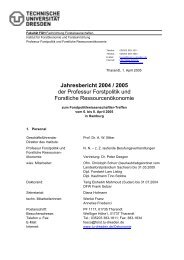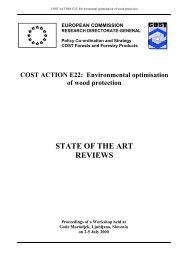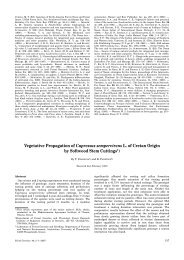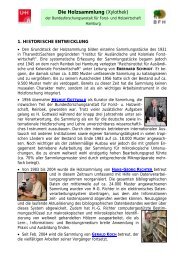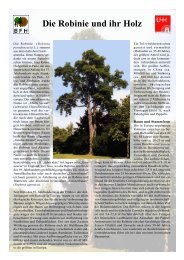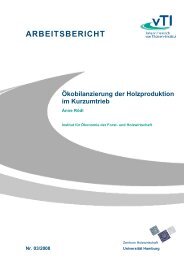Developments in vacuum drying and press drying of
Developments in vacuum drying and press drying of
Developments in vacuum drying and press drying of
You also want an ePaper? Increase the reach of your titles
YUMPU automatically turns print PDFs into web optimized ePapers that Google loves.
Center for<br />
Forest Products<br />
Pr<strong>of</strong>. Dr. Ressel<br />
Introduction<br />
Fundamentals<br />
Plant Facilities<br />
Innovations<br />
Process<br />
Technology<br />
Plant Examples<br />
Brunner<br />
IWT<br />
Mühlböck<br />
Kronseder<br />
Eberl<br />
Opel<br />
HeatWave<br />
Press Dry<strong>in</strong>g<br />
����������� � �� ����<br />
Press Dry<strong>in</strong>g - Fundamentals<br />
Conductive heat transfer → no ... moderate com<strong>press</strong>ion <strong>of</strong> timber<br />
(or timber surface) to be dried<br />
Limitations<br />
→ Com<strong>press</strong>ion forces < com<strong>press</strong>ion strength <strong>of</strong> wood<br />
perpendicular to gra<strong>in</strong> (s<strong>of</strong>twood species approx. 2...10<br />
MPa; hardwood species approx. 5...20 MPa)<br />
→ Com<strong>press</strong>ion strength depend<strong>in</strong>g on wood species,<br />
moisture content <strong>and</strong> (process) temperature (0...140°C<br />
→ 30...35% strength reduction)<br />
→ Initiated <strong>in</strong>ternal <strong>press</strong>ure (water evaporation) <strong>in</strong>creases<br />
rapidly with temperature (100°C → 0,1 MPa; 120°C → 0,2<br />
MPa; 140°C → 0,38 MPa)


